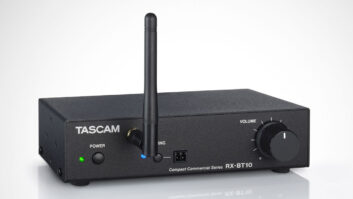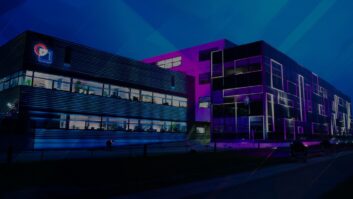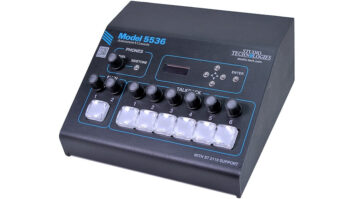
Modern culture is all about connections: social, wired and wireless. Social networking has changed the way we interact with our friends, family and even professionally, and it can evolve overnight. I’m currently looking at tumblr as a way to get product news and reviews out because of its hockey-stick growth, which is increasing by a quarter-billion impressions a week (not a typo). I’ve also been finding it easier to get questions answered about products, company news and technology through Facebook rather than email. For me, it’s just a “follow the river” experience; I’m just floating along, keeping my eyes and ears open.
While I’m adapting to expanding social networks in an effort to improve my journalistic workflow, I’m also excited about how faster physical connections will change the way I record and mix audio. According to the Organization for Economic Cooperation and Development, U.S. Internet speed lags far behind many other countries. But what if we had 60Mbps Internet speeds in our homes like they do in Japan? The most obvious bump would be in efficiency, and that means more money for the freelancer—the new normal in audio.
In the May 2011 issue, Blair Jackson outlined how the “cloud” is changing the way audio pros work. Apple just released iCloud at last month’s WWD Conference, which integrates with your apps and pushes info to all of your devices. And although I’m sick-to-death of all things “cloud,” I have to admit I use Dropbox, MobileMe and YouSend-It at least once a week, and if I had a faster hookup, it would be more.
Apple Thunderbolt
Physical connection speed is not just about the Internet. Last month, I wrote about a laptop-based mix rig I’ve been putting together that was made possible through the release of key products like Pro Tools 9 and the UAD-2 Satellite. The next step for me is going to come from Apple’s Thunderbolt, which offers bi-directional support for 10Gbps data speed on a single connector. Apple is rumored to be upping the ante by offering Thunderbolt plus Intel’s second-generation core “Sandy Bridge” processors on the new MacBook Air computer, so its commitment is strong.
Thunderbolt holds promise in two directions: system stability and throughput. For instance, a hiccup in my current setup is that I’m sharing my hard drive and UAD-2 Satellite pipeline over a single FireWire 800 bus. Although it’s not a deal-breaker, it does get operationally sketchy as I load on the plug-ins. While Thunderbolt shouldn’t make a difference in the number of instances with regard to my UAD-2 Satellite, having unique buses (FireWire and Thunderbolt) for my hard drive and DSP accelerator, or even sharing both on the faster pipe, would make my system more reliable.
Where Thunderbolt will really rock is when it’s used for AD/DA conversion. Thunderbolt should offer a glitch-free, low-latency operation supporting many channels, along with a hard drive and DSP accelerator, not to mention a large video display that is supported in parallel to Thunderbolt’s audio pipeline.
Some companies are eagerly onboard and developing product right now. Apple, Apogee, Avid, MOTU and Universal Audio have all chimed in on their plans to quickly develop products for Thunderbolt. Others, off the record, are understandably more reserved; the reason being how tight Apple has been in releasing the spec to developers—releasing it to audio companies after those who show broader sales potential. Also, according to CNET News, Intel just went on record in April with its intention to support USB 3 (5 Mbps) and Thunderbolt on client platforms in 2012. I can see how a company would want to see the whole picture before they commit and possibly miss the boat on something like USB 3, which is wicked fast in its own right and backward-compatible.
What’s next? Thunderbolt for iPad? Why not? It’s much like the MacBook Air in that it has no hard drive, offers limited Flash memory and is pitched heavily to wireless users. As it is now, its single, clunky I/O connection is fast and wide enough to stream HDMI and interface with USB devices while charging itself. I’m already chomping at the bit for Rational Acoustic’s 2-channel Smaart to become available for my iPad 2 at the end of summer, which means I could run playback diagnostics on a system I can sling over my shoulder. But bring Thunderbolt to this game, and you’ve got a whole new box that could drive a large display while offering large-scale multitrack recording and more. And it can grow in capabilities as processors get faster.
So whether it’s faster Internet connections in line with the rest of the world or broad-based support for Thunderbolt across a range of audio products, the bottom line is that it’s going to make me a better engineer and put more green in my pocket, and I’ll bet the cloud on that.






